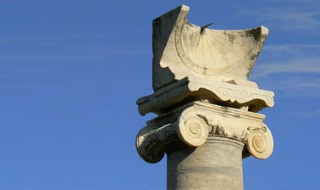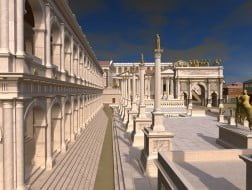Archeoastronomia e Orologi Solari
Explore the modern history of Japan and the transformation of postwar Tokyo through visual records. Learn about Westernization, social protest, and modernity in Japanese history. Gain insights into the development of Tokyo after World War II and the dynamic exchange of gazes in postwar Tokyo. Enroll in this comprehensive XSeries to understand Japan’s transition into the modern world.
Program Overview
Il corso affronta lo studio di due discipline solo apparentemente lontane da loro. La prima, la pi? giovane per codificazione scientifica, avvenuta solo nel XIX secolo, ? stata denominata ?Archeoastronomia?, ovvero la scienza che studia gli allineamenti astronomici di alcuni particolati edifici del passato e il loro significato. Si registra oggi una crescente importanza di tale disciplina da quando architetti, archeologi e studiosi di astronomia si sono resi conto che l?archeoastronomia fornisce una chiave di lettura spesso nuova e inaspettata della forma e della funzione di molti monumenti del passato. Dopo una parte propedeutica di introduzione alla astronomia, in particolar modo ai modelli geometrici usati per lo studio dei suoi fenomeni connessi alle due discipline oggetto del corso, quali ad esempio il movimento apparente del Sole e delle stelle, vengono affrontati alcuni esempi come casi studio. In particolare il corso propone tre ricerche innovative e inedite sul circolo di pietre megalitico di Callanish in Scozia, sulla chiesa Rupestre di San Nicola di Myra nelle vicinanze della citta pugliese di Mottola e sull?osservatorio astronomico Maya di Cichen Itza, dal 1988 patrimonio dell?umanit? UNSECO.
La seconda parte del corso ? dedicata alla gnomonica, ovvero la scienza per la costruzione degli orologi solari, che si basa sui medesimi processi geometrici analizzati per il moto apparente del Sole. Il corso ne illustra il funzionamento di una larga gamma di diverse tipologie di orologi solari e fornisce quelle conoscenze indispensabili per poter nuovamente leggere la misura del tempo grazie a questi sofisticati strumenti artistici e, al contempo scientifici, del passato. Vengono inoltre descritte alcune meridiane monumentali della citt? di Napoli, costruite entrambe nel XVII secolo ad opera di eminenti studiosi operanti in quei tempi nel fiorente clima culturale della corte del Borboni, la prima collocata nella Certosa di San Martino e la seconda nel Gran Salone del Museo Archeologico Nazionale_MANN.
This course combines two independent subjects whose distance from each other
is only apparent. The first, archeoastronomy, was scientifically codified in the XIXth
century and it is the study of the astronomical alignments of some peculiar buildings
from the past along with their meaning. This discipline has been gaining more and
more attention since architects, archeologists and astronomy scholars realized that
archeoastronomy permits to have a new and unexpected perspective on the shape and functions of many monuments.
After a preparatory introduction to astronomy and to the geometrical models used
to study the phenomena connected to these two disciplines such as the apparent
motion of the sun and the stars, the students will be presented with three innovative
and unpublished researches on the circle of megalithic stones in Callanish (Scotland),
on Saint Nicholas from Myra rock church near Mottola (Apulia) and on the Mayan
astronomical observatory of Cichen Itza (Unesco World Heritage Site since 1988).
The second part of this course is dedicated to gnomonics, i.e. the study of the
sundials construction which is based on the same geometrical processes analyzed
in the apparent motion of the sun. This MOOC will then show how several types of
sundials work so as to enable the students to read the time through these sophisticated artistic and scientific tools from the past. Moreover, the users will also be introduced to two monumental sundials in Naples that were built in the XVIIth century by the eminent scholars that were then active in the thriving court of the Bourbons: the Charterhouse of Saint Martin?s sundial and the one kept in the Great Hall of the National Archaelogical Museum (MANN).
User Reviews
Be the first to review “Archeoastronomia e Orologi Solari”
You must be logged in to post a review.








There are no reviews yet.